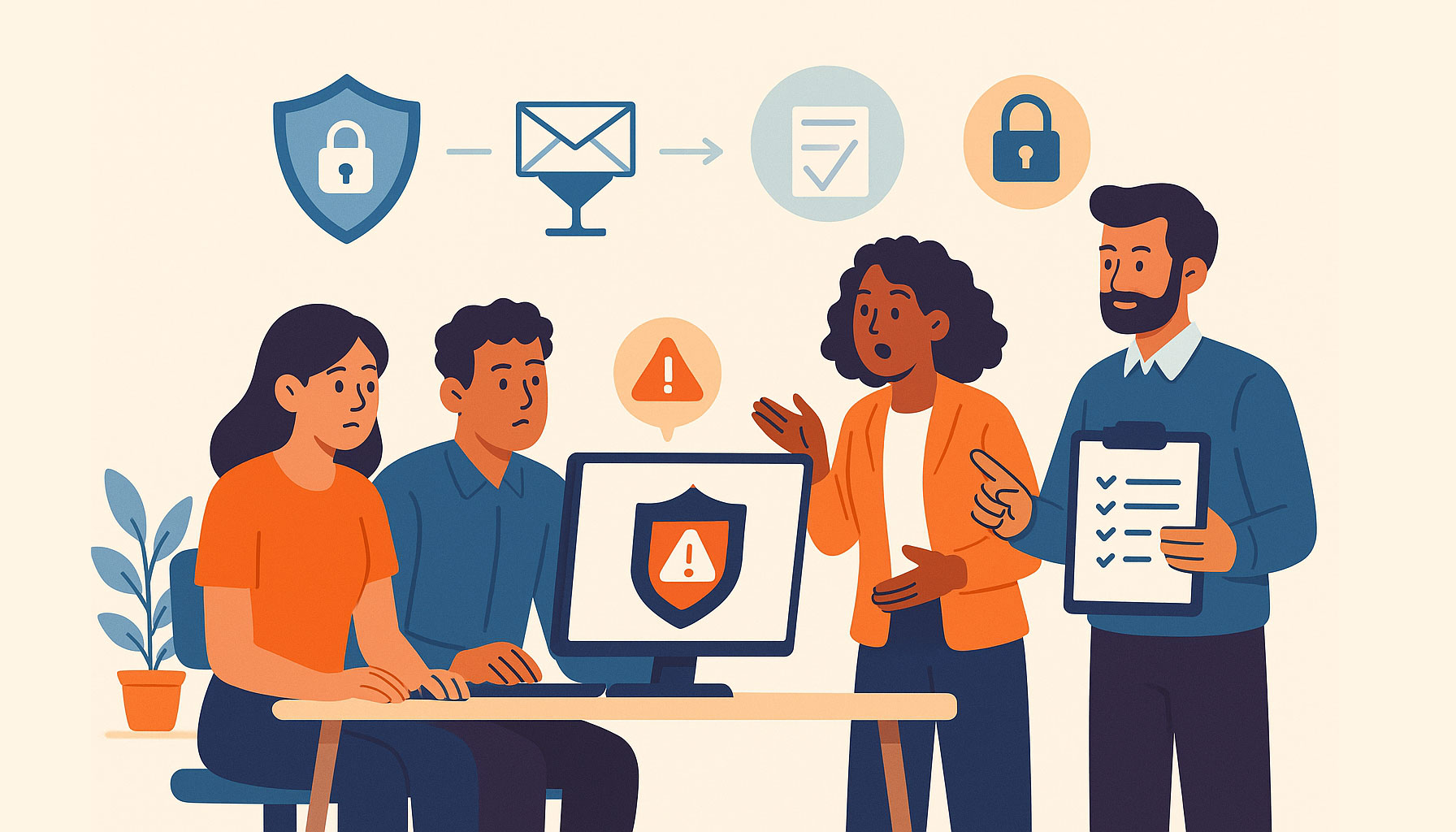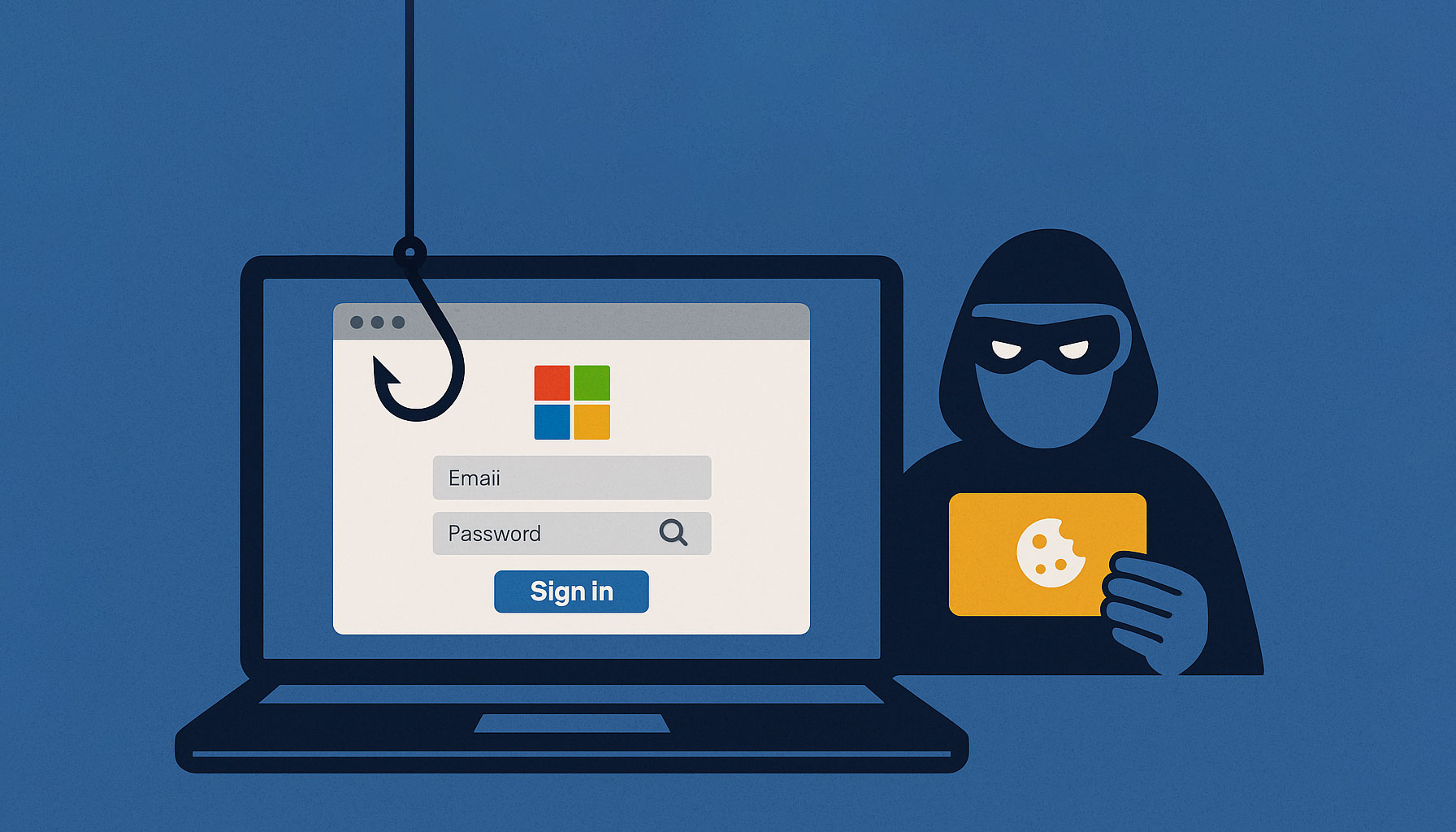Estimated Reading Time: 4 minutes
It’s the question every IT and security team gets asked - and for good reason. It only takes one click on the wrong link to open the door to malware, ransomware, or worse: a full-blown data breach.
The Truth? You Can't Prevent Every Click
There’s no way to 100% guarantee that someone in your team won’t click a dodgy link. We're all human - and unfortunately, cybercriminals are getting better at disguising threats as legitimate emails, messages, and websites.
But there are smart, proactive ways to reduce the risk, strengthen your defences, and build a workplace culture where security becomes second nature.
How to Reduce the Risk
Education is Your First Line of Defence
The most powerful tool is awareness. Equip your team with the confidence to question, spot, and report suspicious messages.
- Run bite-sized training sessions (15-30 minutes)
- Use real-world examples of phishing emails or scams
- Repeat the training regularly - not just once a year
A common scam we've seen involves a fake Microsoft email that says: “Your password is expiring – click here to reset it.” Educating your team to check the sender’s email and hover over links before clicking makes a huge difference.
Use Technical Controls
Even the most cautious team needs backup. You can deploy tools like:
- Email filtering and spam control
- Link scanning and sandboxing
- DNS filtering and web protection
- Endpoint Detection and Response (EDR)
One client had a phishing email that looked harmless. The link was shortened and redirected to a malicious site. Thanks to real-time link scanning with Microsoft Defender, it was blocked before it could load.
Monitor and React Quickly
Even with all the right tools in place, things can still slip through. That’s where intelligent monitoring comes in.
Platforms like Microsoft Defender for Identity and Entra ID Protection can:
- Detect unusual login activity
- Flag potentially compromised accounts
- Automatically block risky sign-ins
We detected an attempted login from Brazil at 3am for a UK-only business. The system blocked the attempt and notified us - no damage done.
Build a No-Blame Reporting Culture
Too often, staff hesitate to report mistakes out of fear.
Flip that script. Make it clear that reporting is encouraged - even if someone thinks they’ve already clicked something dodgy. You’d rather investigate a false alarm than miss a real threat.
A team member at one of our clients forwarded a strange invoice email. It was a phishing attempt targeting finance teams. Thanks to their quick thinking, we stopped it company-wide before it spread.
Run Phishing Simulations (Constructively)
Phishing simulations are a great way to:
- Reinforce training
- Identify weak points
- Keep security top of mind
But avoid the “gotcha” approach. Your aim isn’t to shame people - it’s to build resilience. Frame every simulation as a learning opportunity.
What Does a Dodgy Link Look Like?
Here are a few red flags to watch for:
- Fake login pages with URLs like
microsoft-security-login.com - Urgent messages from personal addresses like
ceo.company@gmail.com - Invoices with ZIP or EXE attachments you weren’t expecting
Train your team to hover over links, double-check sender addresses, and slow down before acting.
Let’s Make It Harder for Attackers
Cybersecurity isn’t just about tools - it’s about mindset. At Telanova, we help businesses build smarter, safer IT environments through a mix of user training, technical protection, and proactive monitoring.
We work with businesses across Wokingham, Ascot, Bracknell, Reading, and the wider Berkshire region.
Learn more about our IT support services or give us a call on 01344 989 530 to discuss how we can help protect your team.
FAQs
Can you completely prevent staff from clicking phishing links?
No - not completely. Even well-trained users can be caught out. But the goal is to reduce the risk significantly through training and tools.
Is phishing training actually effective?
Yes - when it’s regular, engaging, and backed by real-world examples. Combined with technical controls, it’s a crucial part of your defence strategy.
What’s the best tool to stop phishing emails?
There’s no silver bullet, but tools like Microsoft Defender for Office 365, SpamTitan, or Barracuda provide strong filtering and link protection.
How often should phishing simulations be run?
We recommend quarterly simulations for most teams, with follow-up training based on the results.
Should we punish staff for clicking on phishing simulations?
No. That creates fear. Instead, focus on training, encouragement, and improvement.
Can you help us run phishing tests or review our email security?
Absolutely. Contact our team and we’ll walk you through your current setup and recommend improvements based on your goals.





